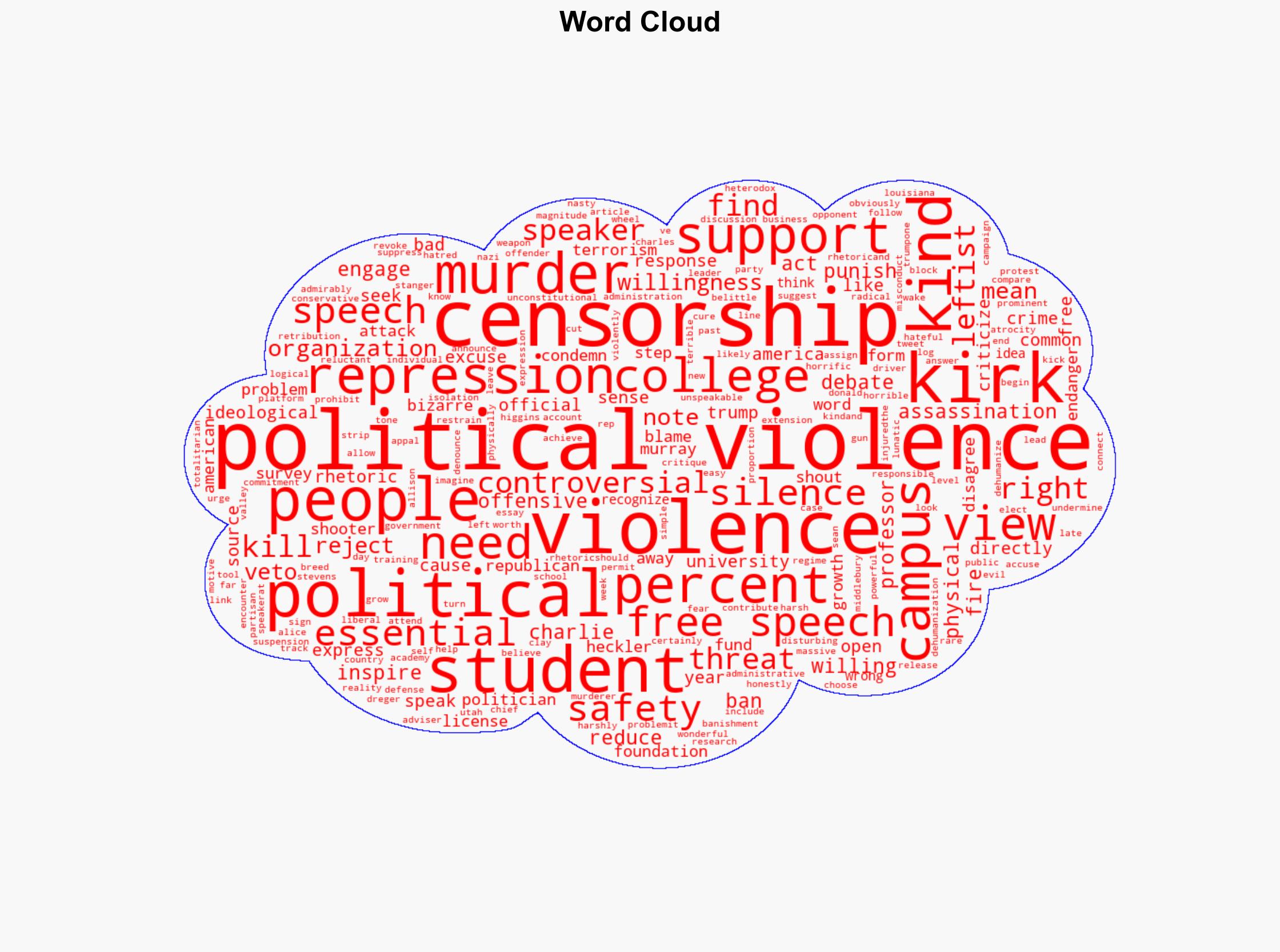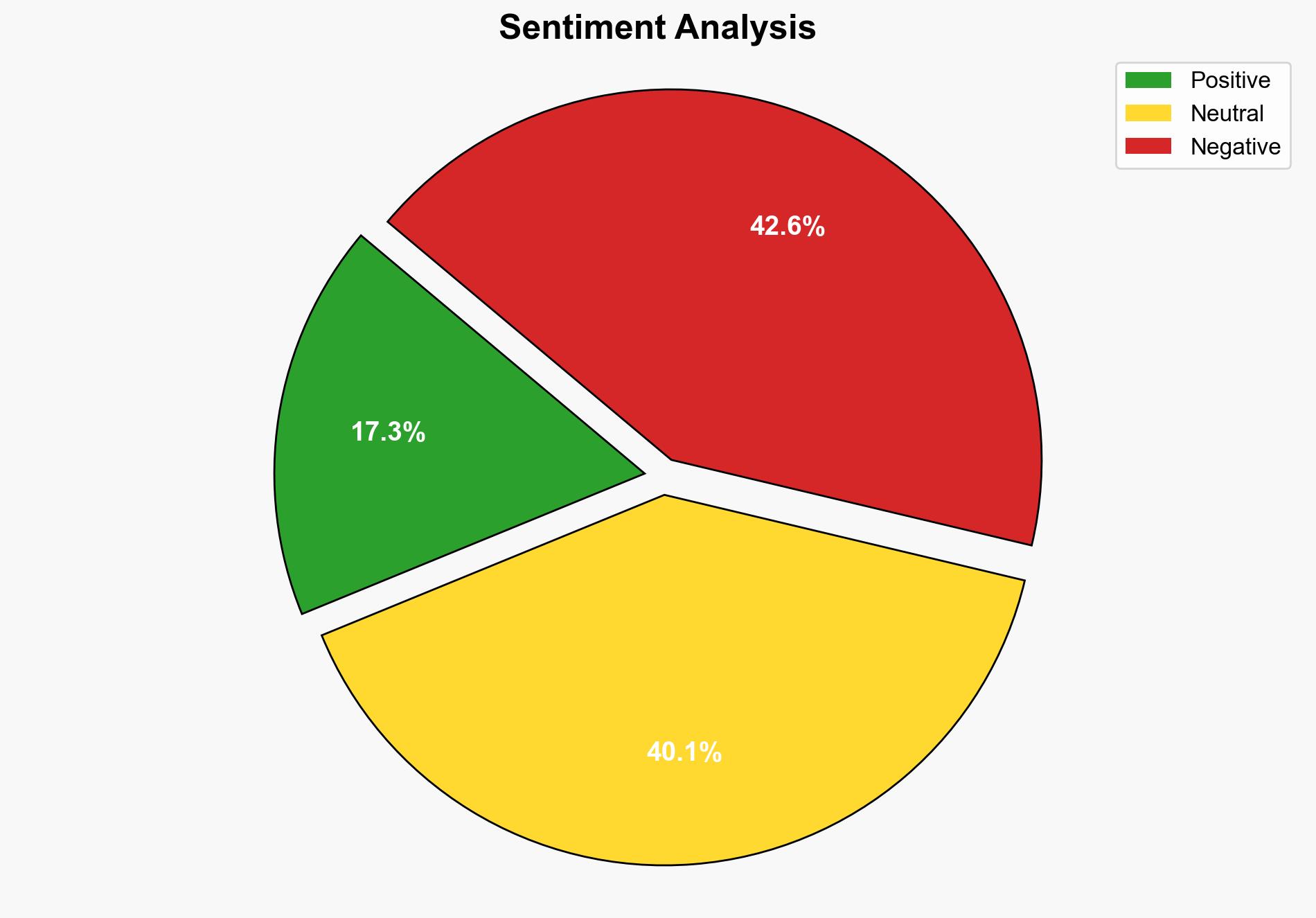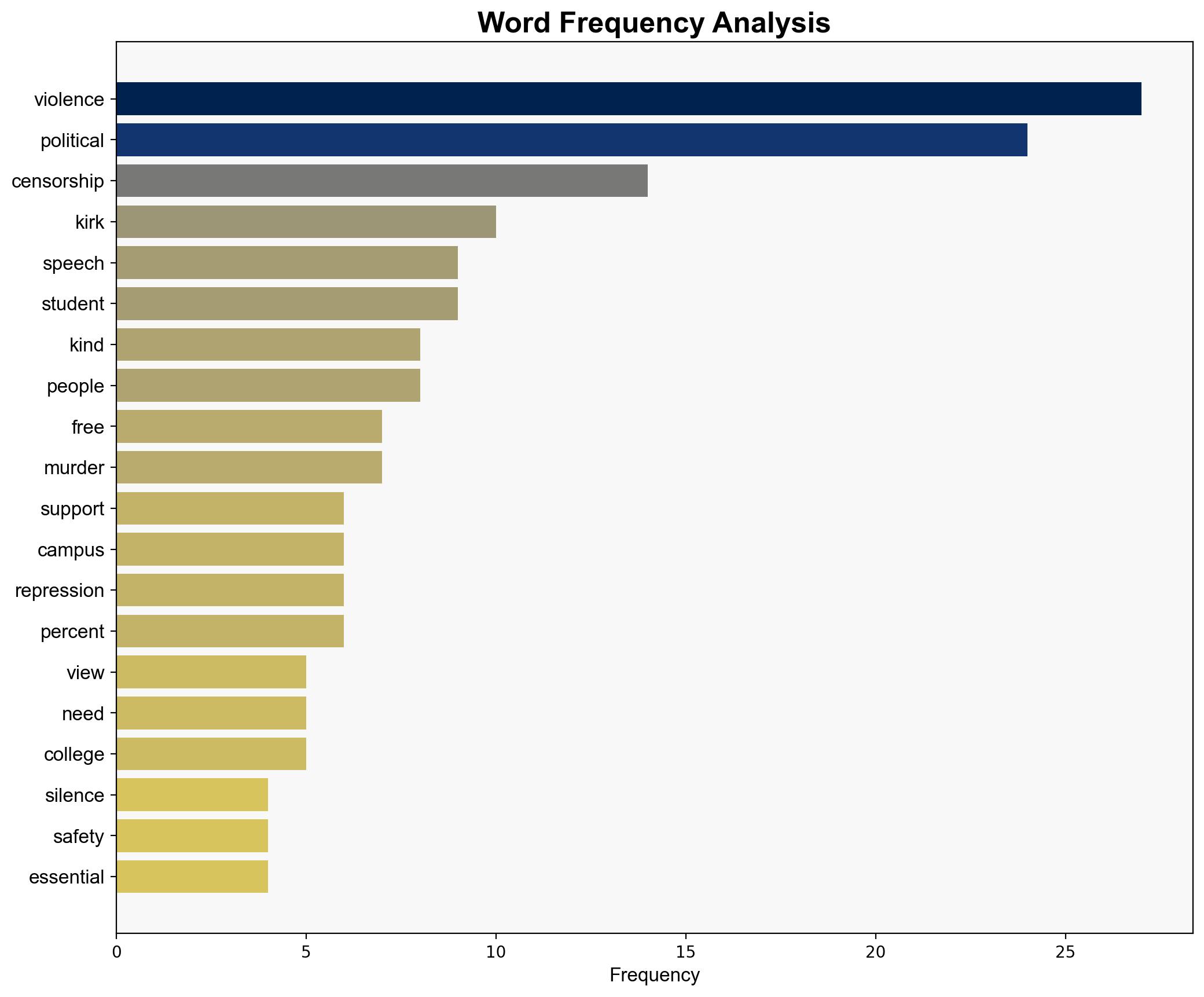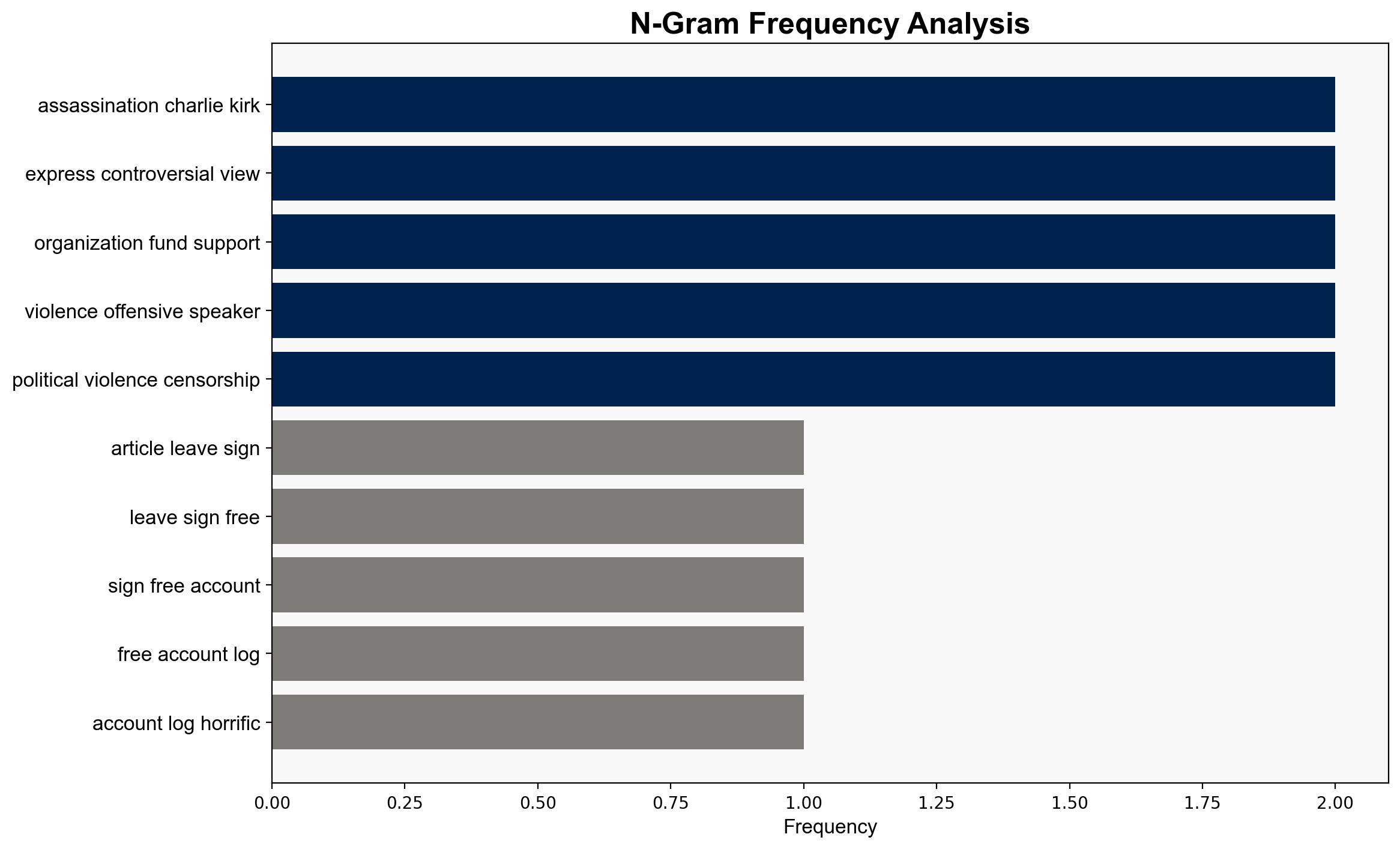Stopping Political Violence With Free Speech – Inside Higher Ed
Published on: 2025-09-12
Intelligence Report: Stopping Political Violence With Free Speech – Inside Higher Ed
1. BLUF (Bottom Line Up Front)
The analysis suggests a moderate confidence level that promoting free speech as a tool to counter political violence is more effective than censorship. The most supported hypothesis is that open debate and free speech can reduce the likelihood of political violence by addressing grievances and reducing polarization. Recommended action includes fostering environments that encourage dialogue and implementing educational programs on free speech and conflict resolution.
2. Competing Hypotheses
1. **Hypothesis A**: Promoting free speech reduces political violence by allowing grievances to be aired and addressed, thus decreasing the motivation for violence.
2. **Hypothesis B**: Censorship and repression of controversial speech are necessary to prevent political violence by limiting the spread of inflammatory rhetoric that could incite violence.
Using ACH 2.0, Hypothesis A is better supported as it aligns with historical precedents where open dialogue has mitigated tensions, whereas Hypothesis B may exacerbate underlying tensions by driving dissent underground.
3. Key Assumptions and Red Flags
– **Assumptions**: Hypothesis A assumes that individuals are rational actors who will choose dialogue over violence when given a platform. Hypothesis B assumes that inflammatory rhetoric directly causes violence.
– **Red Flags**: The assumption that free speech alone can prevent violence may overlook other contributing factors such as socio-economic disparities. The potential for censorship to be used as a tool for political gain rather than genuine safety concerns is a significant risk.
4. Implications and Strategic Risks
– **Implications**: Encouraging free speech could lead to a more informed and engaged public, potentially reducing polarization. However, it may also increase short-term tensions as controversial views are aired.
– **Strategic Risks**: Over-reliance on censorship could lead to increased radicalization and underground movements. There is a risk of escalation if political violence is perceived as being politically motivated or if censorship is unevenly applied.
5. Recommendations and Outlook
- Implement educational programs that emphasize the value of free speech and conflict resolution.
- Encourage platforms and institutions to create spaces for open dialogue while monitoring for hate speech.
- Best Case: Reduction in political violence and increased public engagement.
- Worst Case: Escalation of violence due to perceived suppression of views.
- Most Likely: A mixed outcome where free speech reduces some tensions but fails to address deeper socio-economic issues.
6. Key Individuals and Entities
– Charlie Kirk: Central figure in the discussion, whose assassination sparked the debate on free speech and political violence.
– Donald Trump: Mentioned as a political leader whose rhetoric is scrutinized in the context of political violence.
– Rep. Clay Higgins: Advocated for censorship in response to political violence.
7. Thematic Tags
national security threats, political violence, free speech, censorship, public policy




